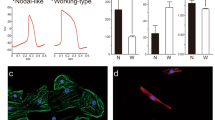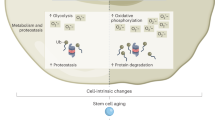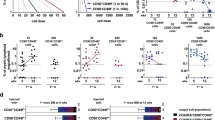Abstract
For decades, it has been widely accepted that the heart is a terminally differentiated organ that is unable to regenerate. Studies of recipients of hearts donated by other humans have shed light on the regenerative potential of the human heart. Investigators have been able to trace the Y chromosome by fluorescence in situ hybridization or polymerase chain reaction, or both, in sex-mismatched heart recipients. Cardiac chimerism has been reported, with concentrations of chimeric cells ranging from 0.04% to 10.0%. Cardiac chimerism after bone marrow or progenitor cell transplantation has also been reported to a low extent (∼0.20%), suggesting that a fraction of the extracardiac cells that colonize the myocardium are of bone marrow origin. Cardiac chimerism after pregnancy with male offspring (fetal cell microchimerism) has also been demonstrated. Cells of fetal origin have been shown to be capable of differentiating into myocardial cells. Collectively, we show that chimerism studies provide a proof of concept of a process that it is likely to be part of normal cardiac homeostasis in humans but apparently insufficient for cardiac repair in diseased hearts.
Key Points
-
Cardiac chimerism occurs after heart transplantation to a small extent, but this effect is unable to meet long-term demand for organ repair
-
A percentage of chimeric cells that home to the myocardium are of bone marrow origin
-
Cardiac chimerism after pregnancy with a male offspring (fetal cell microchimerism) has also been demonstrated
-
Future studies must address unresolved issues, such as the mechanisms responsible for myocardial differentiation of primitive cells
This is a preview of subscription content, access via your institution
Access options
Subscribe to this journal
Receive 12 print issues and online access
$209.00 per year
only $17.42 per issue
Buy this article
- Purchase on Springer Link
- Instant access to full article PDF
Prices may be subject to local taxes which are calculated during checkout



Similar content being viewed by others
References
Kajstura J et al. (1998) Myocyte proliferation in end-stage cardiac failure in humans. Proc Natl Acad Sci USA 95: 8801–8805
Beltrami AP et al. (2001) Evidence that human cardiac myocytes divide after myocardial infarction. N Engl J Med 344: 1750–1757
Orlic D et al. (2001) Bone marrow cells regenerate infarcted myocardium. Nature 410: 701–705
Jackson KA et al. (2001) Regeneration of ischemic cardiac muscle and vascular endothelium by adult stem cells. J Clin Invest 107: 1395–1402
Tomita S et al. (1999) Autologous transplantation of bone marrow cells improves damaged heart function. Circulation 100: II247–256
Quaini F et al. (2002) Chimerism of the transplanted heart. N Engl J Med 346: 5–15
Laflamme MA et al. (2002) Evidence for cardiomyocyte repopulation by extracardiac progenitors in transplanted human hearts. Circ Res 90: 634–640
Muller P et al. (2002) Cardiomyocytes of noncardiac origin in myocardial biopsies of human transplanted hearts. Circulation 106: 31–35
Bayes-Genis A et al. (2002) Host cell-derived cardiomyocytes in sex-mismatch cardiac allografts. Cardiovasc Res 56: 404–410
Glaser R et al. (2002) Smooth muscle cells, but not myocytes, of host origin in transplanted human hearts. Circulation 106: 17–19
Taylor DA et al. (2002) Cardiac chimerism as a mechanism for self-repair: does it happen and if so to what degree? Circulation 106: 2–4
Deb A et al. (2003) Bone marrow-derived cardiomyocytes are present in adult human heart: A study of gender-mismatched bone marrow transplantation patients. Circulation 107: 1247–1249
Bayes-Genis A et al. (2004) Cardiac chimerism in recipients of peripheral-blood and bone marrow stem cells. Eur J Heart Fail 6: 399–402
Orlic D et al. (2001) Mobilized bone marrow cells repair the infarcted heart, improving function and survival. Proc Natl Acad Sci USA 98: 10344–10349
Ince H et al. (2005) Preservation from left ventricular remodeling by front-integrated revascularization and stem cell liberation in evolving acute myocardial infarction by use of granulocyte-colony-stimulating factor (FIRSTLINE-AMI). Circulation 112: 3097–3106
Zohlnhöfer D et al. (2006) Stem cell mobilization by granulocyte colony-stimulating factor in patients with acute myocardial infarction: a randomized controlled trial. JAMA 295: 1003–1010
Dimmeler S et al. (2005) Unchain my heart: the scientific foundations of cardiac repair. J Clin Invest 115: 572–583
Schmorl G (1893) Pathologisch-anatomische Untersuchungen ueber Puerperal-Eklampsie. Leipzig: Verlag von FCW Vogel
Evans PC et al. (1999) Long-term fetal microchimerism in peripheral blood mononuclear cell subsets in healthy women and women with scleroderma. Blood 93: 2033–2037
Bianchi DW et al. (2001) Significant fetal-maternal hemorrhage after termination of pregnancy: implications for development of fetal cell microchimerism. Am J Obstet Gynecol 184: 703–706
Khosrotehrani K et al. (2003) The influence of fetal loss on the presence of fetal cell microchimerism: a systematic review. Arthritis Rheum 48: 3237–3241
Khosrotehrani K and Bianchi DW (2005) Multi-lineage potential of fetal cells in maternal tissue: a legacy in reverse. J Cell Sci 118: 1559–1563
Bianchi DW et al. (1996) Male fetal progenitor cells persist in maternal blood for as long as 27 years postpartum. Proc Natl Acad Sci USA 93: 705–708
Johnson KL et al. (2001) Fetal cell microchimerism in tissue from multiple sites in women with systemic sclerosis. Arthritis Rheum 44: 1848–1851
Srivatsa B et al. (2001) Microchimerism of presumed fetal origin in thyroid specimens from women: a case-control study. Lancet 358: 2034–2038
Bayes-Genis A et al. (2005) Identification of male cardiomyocytes of extracardiac origin in the hearts of women with male progeny: male fetal cell microchimerism of the heart. J Heart Lung Transpl 24: 2179–2183
Beltrami AP et al. (2003) Adult cardiac stem cells are multipotent and support myocardial regeneration. Cell 114: 763–776
Oh H et al. (2003) Cardiac progenitor cells from adult myocardium: homing, differentiation, and fusion after infarction. Proc Natl Acad Sci USA 100: 12313–12318
Balsam LB et al. (2004) Haematopoietic stem cells adopt mature haematopoietic fates in ischaemic myocardium. Nature 428: 668–673
Murry CE et al. (2004) Haematopoietic stem cells do not transdifferentiate into cardiac myocytes in myocardial infarcts. Nature 428: 664–668
Nygren JM et al. (2004) Bone marrow-derived hematopoietic cells generate cardiomyocytes at a low frequency through cell fusion, but not transdifferentiation. Nat Med 10: 494–501
Eisenberg CA et al. (2006) Bone marrow cells transdifferentiate to cardiomyocytes when introduced into the embryonic heart. Stem Cells 24: 1236–1245
Rosenzweig A (2006) Cardiac cell therapy–mixed results from mixed cells. N Engl J Med 355: 1274–1277
Alvarez-Dolado M et al. (2003) Fusion of bone-marrow-derived cells with Purkinje neurons, cardiomyocytes and hepatocytes. Nature 425: 968–973
Ausoni S et al. (2005) Host-derived circulating cells do not significantly contribute to cardiac regeneration in heterotopic rat heart transplants. Cardiovasc Res 68: 394–404
Acknowledgements
We appreciate the valuable help of Jose Montiel and Prous Science with the artwork. Grant support was provided by the Spanish Ministry of Science and Education (SAF 2004-08044-C03-01), Novartis, BMS, and Fundación Bravo Andreu.
Author information
Authors and Affiliations
Corresponding author
Ethics declarations
Competing interests
The authors declare no competing financial interests.
Rights and permissions
About this article
Cite this article
Bayes-Genis, A., Roura, S., Prat-Vidal, C. et al. Chimerism and microchimerism of the human heart: evidence for cardiac regeneration. Nat Rev Cardiol 4 (Suppl 1), S40–S45 (2007). https://doi.org/10.1038/ncpcardio0748
Received:
Accepted:
Issue Date:
DOI: https://doi.org/10.1038/ncpcardio0748
This article is cited by
-
Mesenchymal stem cells for cardiac repair: are the actors ready for the clinical scenario?
Stem Cell Research & Therapy (2017)
-
Stem Cell Therapy: Pieces of the Puzzle
Journal of Cardiovascular Translational Research (2010)



